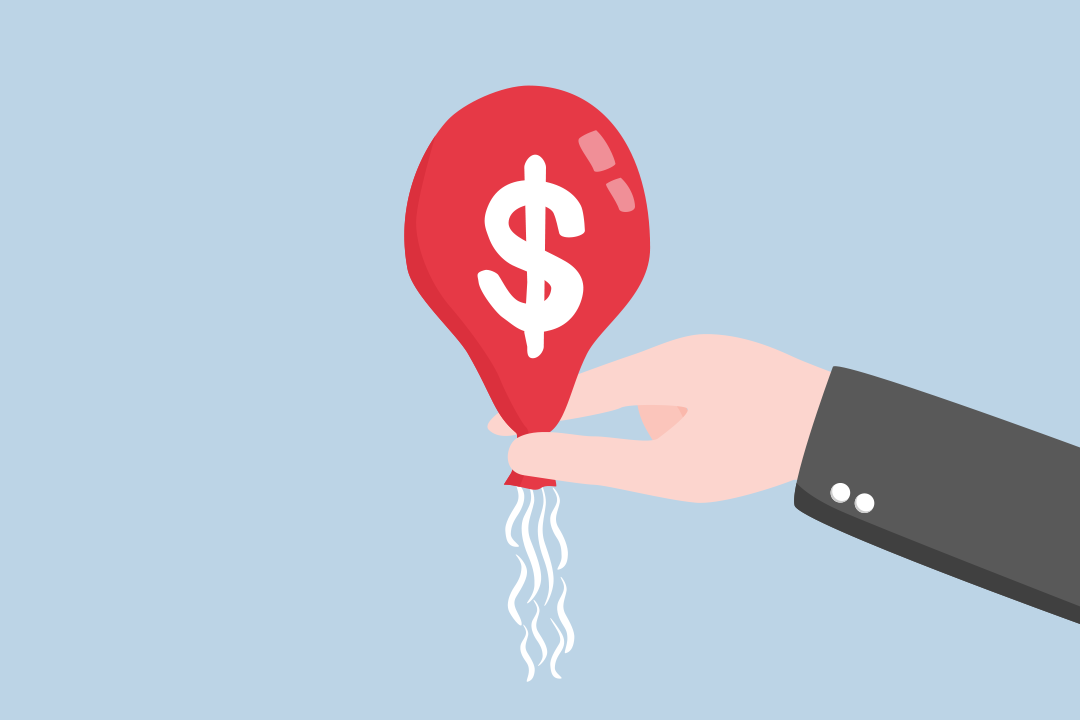

Our stock market is poised to open 60 points higher and you can thank the latest stat update on US inflation, which has sent Wall Street into a positive spin.
Never before has inflation news in the US meant so much for our economy, stock market and what interest rates will do in this country. Thankfully, the Yanks copped a better-than-expected rise in inflation and Wall Street loved it. Today our stock market will love it too.
And it should be a good day for beaten-up tech stocks locally, after US tech stocks seriously spiked on the news that inflation for July came in at a better-than-expected 8.5% after a shocker of a 9.1% number for June.
At the time, President Joe Biden claimed it was bad news but old news and the July number would come in better, with gasoline and commodity prices on the slide. When Biden made this prediction, I checked the US statistician’s view, whose story virtually matched the press release that came with that huge inflation number.
I’ve been telling you that a good number for July would then make it likely that August would be even better. Stock markets (as well as central banks) were always going to love to see that the aggressive rate rising program was helping bring down inflation.
However, that’s only one part of the improving inflation story.
Lower oil and commodity prices have helped (with US gasoline prices down 20%) and so has an improving supply chain that was mangled by the pandemic’s problematic lockdowns. Also, inventories (stocks on shelves) rise as shoppers buy fewer products such as TVs and gadgets and purchase more services, such as holidays. This means retailers cut prices. This should lead to a dissipation of the inflation rate in coming months as many economists, the Fed and Joe Biden had been predicting. While this is only the first step to lower inflation and fewer rate rises, it’s an important first one.
“The deceleration in the Consumer Price Index for July is likely a big relief for the Federal Reserve, especially since the Fed insisted that inflation was transitory, which was incorrect ... If we continue to see declining inflation prints, the Federal Reserve may start to slow the pace of monetary tightening,” Nancy Davis, founder of Quadratic Capital Management told CNBC.
This is a cautious and appropriate view of what has happened and we’ll need to see more inflation falls in coming months but it does show what potentially lies ahead for stocks, the economy and interest rates if this trend continues.
The Americans get inflation monthly but the Fed doesn’t meet every month, with the next meeting on September 21-22, which follows the next inflation reading on September 13. If this downtrend for inflation continues, the stock market will lap it up taking stock prices in the same direction.
Aside from improving oil prices, food prices are on the slide as the world pivots in reaction to the Ukraine war, which has forced many of these commodity prices higher. “We’re seeing that the upstream prices of corn and wheat have gone back to where they were prior to the war, but it takes a while for those products to go through the next stage of production,” said Brian Bethune, an economics professor at Boston College. “It has to be shipped and then stocked at the grocery stores, so [the price decreases are] probably going to take a little bit longer.” (The Guardian)
Unfortunately, the semiconductor chip shortage continues but the impact on prices is tapering off, but it might be 2023 before this cost-impost on inflation, via the cost of car prices, starts to fall.
“In July, Americans were paying 10.4% more for new vehicles and 6.6% more for used cars compared with the year before,” The Guardian’s Lauren Aratani explained. “That’s a dramatic fall from earlier this year. In January used cars were 44.6% higher than they were at the start of 2021.”
All this is good news to Australians with mortgages, as the RBA has a habit of copying the actions of the Fed in the US. If the latter eases up on rate rises because of improving inflation, we should expect fewer rate rises. And the overall magnitude of the cash rate rise should be less than has been predicted by many economists, who’ve had a tendency to expect the worst and have predicted bigger rate rises than seemed necessary.
All this has helped ‘spook’ many Australians with big loans, which also helps bring down the inflation rate, which we next see on October 26 (for the September quarter). The RBA will be looking for indicators that should tell them if our inflation could end up being better than expected, like the Yanks.
All this news today is a plus for stocks and should mean we’ve seen the worst of the share market sell-off, unless some crazy curve ball comes out of Russia or China.
Pray that doesn’t happen.